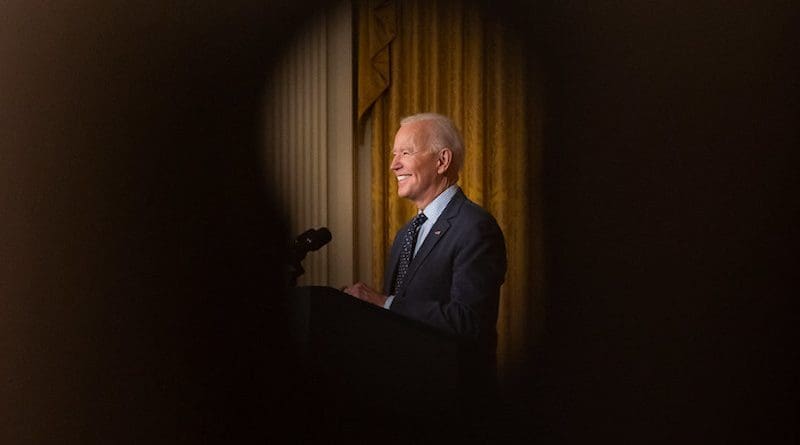Biden Explains Reasoning Behind Afghanistan Decision
By DoD News
By Jim Garamone
In making his decision to end the war in Afghanistan, President Joe Biden determined he would “not send another generation of Americans to war in Afghanistan with no reasonable expectation of achieving a different outcome.”
The president spoke at the White House yesterday and gave further insight into his thinking to have all American forces out of Afghanistan by August 31.
The president also praised the more than 800,000 American service members, DOD civilians and contractors who served in Afghanistan since 2001.
Those sacrifices played in Biden’s decision to withdraw from Afghanistan. “Let me ask those who wanted us to stay: How many … thousands more of America’s daughters and sons are you willing to risk? How long would you have them stay?” he said.
He noted that there are already veterans of the fighting in Afghanistan whose sons and daughters have also deployed to the country.
The United States military went into Afghanistan as a response to the attacks of September 11, 2001 that killed 3,000 people in the United States. Al-Qaida — led by Osama bin Laden — planned and rehearsed the attacks from their safe haven in Afghanistan.
Since then, the United States has lost 2,448 Americans killed, 20,722 wounded, and thousands coming home with unseen trauma to their mental health. The United States spent about $1 trillion training and outfitting Afghan defense forces. “The United States cannot afford to remain tethered to policies creating a response to a world as it was 20 years ago,” Biden said. “We need to meet the threats where they are today.”
The terror threat has shifted to different areas including Somalia, West Africa and South Asia and the Middle East. Biden said the U.S. military is studying where forces can best be used. “But make no mistake: Our military and intelligence leaders are confident they have the capabilities to protect the homeland and our interests from any resurgent terrorist challenge emerging or emanating from Afghanistan,” he said.
But the main threats have changed since 2001 and the United States needs to develop new capabilities to meet the challenge from China.
“We have to defeat COVID-19 at home and around the world, make sure we’re better prepared for the next pandemic or biological threat,” the president said. “We need to establish international norms for cyberspace and the use of … emerging technologies. We need to take concerted action to fight existential threats of climate change. And we will be more formidable to our adversaries and competitors over the long run if we fight the battles of the next 20 years, not the last 20 years.”

